Please visit Marketing Land for the full article.
Source Marketing Land - Internet Marketing News, Strategies & Tips https://ift.tt/2w6KdcU
If you’ve never had to respond to a social media crisis, consider yourself lucky.
The reality, though? Businesses both big and small need a crisis plan.
Because social media meltdowns, pile-ons and controversies aren’t just reserved for the biggest companies anymore.
Recent engagement statistics highlight just how quickly social media moves for modern companies. When you’re always dealing with a flood of @mentions, messages and updates, it’s clear how mistakes can get made and spiral out of control.
Meanwhile, the ongoing coronavirus pandemic highlights the need for a social media crisis management plan. Brands must be more mindful than ever of customer empathy and how they carry themselves during troubled times.
This guide breaks down the basics of handling a social media crisis and tips to prevent problems in the future.
Hey, fair question.
In short, a crisis represents any social media activity that potentially hurts your brand’s reputation or ability to do business.
Bear in mind that a “crisis” is much more than just a single negative comment or customer complaint. Indicators of a crisis could be anything from a flurry of negative comments to an outright boycott of your products.
Also, note that not all crises are totally within your control as a marketer. They can happen no matter how careful your brand is with its messaging.
How so? Let’s look at some social media crisis examples below.
Perhaps the most common–and preventable–type of crisis that comes from saying something offensive or insensitive.
We see such snafus often from celebrities. Chalk it up to a lack of self-awareness or not having a second opinion to say “Hey, maybe you shouldn’t post this.”
Consider the recent backlash from Vanessa Hudgens’ insensitive comments on Instagram Live regarding the COVID-19 crisis. Note that Hudgens is among one of the most-followed celebrities on Instagram with over 38 million followers.
Questioning the effectiveness of shelter-in-place orders and playfully commenting “Like, people are going to die” was both out-of-touch and irresponsible, to say the least. Hudgens has since walked back her comments and “apologized,” although damage to her reputation has certainly been done based on the replies.
— Vanessa Hudgens (@VanessaHudgens) March 17, 2020
Errors in judgment aren’t just restricted to celebrities. For example, the Indian branch of Dutch airline KLM had to apologize for a now-deleted insensitive tweet regarding the fatality rates on airplanes based on where passengers are sitting during a flight.
The fact that the back seats on a plane are technically the safest may not be offensive on its own. However, presenting death rates as a “fun fact” with a #TriviaTuesday hashtag is definitely in poor taste.
We would like to sincerely apologise for a recent update. The post was based on a publically available aviation fact, and isn't a @KLM opinion. It was never our intention to hurt anyone's sentiments. The post has since been deleted.
— KLM India (@KLMIndia) July 17, 2019
Social media and community managers serve as the sort of mouthpiece for their respective brands online.
And if a product you’re putting out doesn’t deliver or results in bad press, you’re going to be taking the brunt of the criticism.
As highlighted by Refinery29, a number of beauty influencers and YouTubers took to social media in 2020 to speak out against DevaCurl products after previously promoting them to followers and fans.
Plus, a corresponding Facebook Group with more than 59,000 members cited hair damage and loss from using DevaCurl.
This controversy highlights the big-picture impact of social media crisis management. For example, front-page Google results for “DevaCurl” include coverage of the controversy as well as the video noted above.
DevaCurl has publicly addressed the allegations against their products, but the visibility of the issue won’t disappear immediately.
We’ve been working non-stop to get to the bottom of what’s happening with some members of our community. We promised to keep you updated when we had news, and today we’re sharing new information that we’ve never made public before. Click here: https://t.co/9lXJZIJKo1 #DevaFacts pic.twitter.com/guNxkbccBd
— DevaCurl (@DevaCurl) February 29, 2020
As noted earlier, sometimes a crisis occurs due to something completely beyond a social manager or marketing department’s control.
For example, Cynet Systems had to completely delete their job-centric Twitter account and apologize for a job posting on LinkedIn seeking a “preferably Caucasian” candidate in 2019. Regardless of who was responsible for the listing itself, the brand apologized but was understandably dragged on Twitter for the error.
Uh, hey @cynetjobs – what's with this?
Your job listing for a mid-senior level business development position's top qualification is "Preferably Caucasian"
How could you POSSIBLY think that's okay? pic.twitter.com/DPWzpgXqqE
— Helena (@misshelenasue) April 27, 2019
Another example comes from Walmart in 2017 in which an image went viral depicting a “back to school” promo in front of a store’s firearm display. Regardless of the origin of the photo and whether it was some sort of prank or staged incident, their social team was pressed to respond.
What’s in this pic would never be acceptable in our stores. We regret this situation & are looking into how it could have happened. -Danny
— Walmart (@Walmart) August 9, 2017
Although there’s sort of a gray area on what sort of outages constitute a “crisis,” they can definitely become bigger problems if you aren’t paying attention.
Let’s say you’re in the midst of a product launch and your site goes down. Or maybe you’re promoting an irresistible offer to your customers and your links are broken.
If so, an explosion of @mentions and complaints could very well come your way.
Thanks for choosing us for dinner! We’re aware that our site is down and it’s the only way to claim our Family Meal deal. We appreciate your patience as we get the site back on track.
— Panda Express (@PandaExpress) March 21, 2020
The good news is that these sorts of crises are the easiest, granted you’re equipped to respond and fix the issue in a timely manner that satisfies customers’ needs..
To say that we live in unprecedented times is an understatement.
These days brands need to be prepared for anything. The real-time crisis management efforts we’re seeing from companies in response to COVID-19 is proof of that.
With all the news around COVID-19, our usual social content just doesn’t feel relevant. Starting today, we're using social to support you by sharing resources and starting new conversations around remote work and open communication to help (even just a little) during this time.
— Sprout Social (@SproutSocial) March 13, 2020
From pandemics to tragedies and beyond, brands need to be aware of current events and respond in a way that’s tasteful and not tone-deaf.
In some cases, that might mean putting your social marketing on pause or shifting focus. In other cases, it may be the best channel for communicating with customers.
Right now social media is crucial for many of the businesses that had to temporarily shut their doors because of COVID-19
There’s no better way to stay top-of-mind in an unobtrusive way
— Matthew Kobach (but havin a social distanced bday) (@mkobach) March 24, 2020
Listen: we’re not trying to freak you out or scare your marketing team.
Businesses today need to be proactive. Given the constantly “on” nature of businesses today and the unpredictable nature of life itself, it pays to be prepared.
Now that we know what common crises are out there, let’s talk about what it takes to respond to one when it does occur.
A response time of 12 hours is considered the norm when it comes to questions and concerns on social media.
However, social media crisis management means responding as quickly as possible. The sooner you’re able to react and quell any sort of controversy, the better. Whether that means deleting a post or issuing an apology depends on the situation.
Either the way, it all starts with keeping a keen eye on your notifications and @mentions to keep a negative feedback loop from forming.
This doesn’t mean staring at your social feeds 24/7, thankfully. For example, social media engagement tools like Sprout can notify you of engagement spikes and spot a potential crisis before it has a chance to snowball.
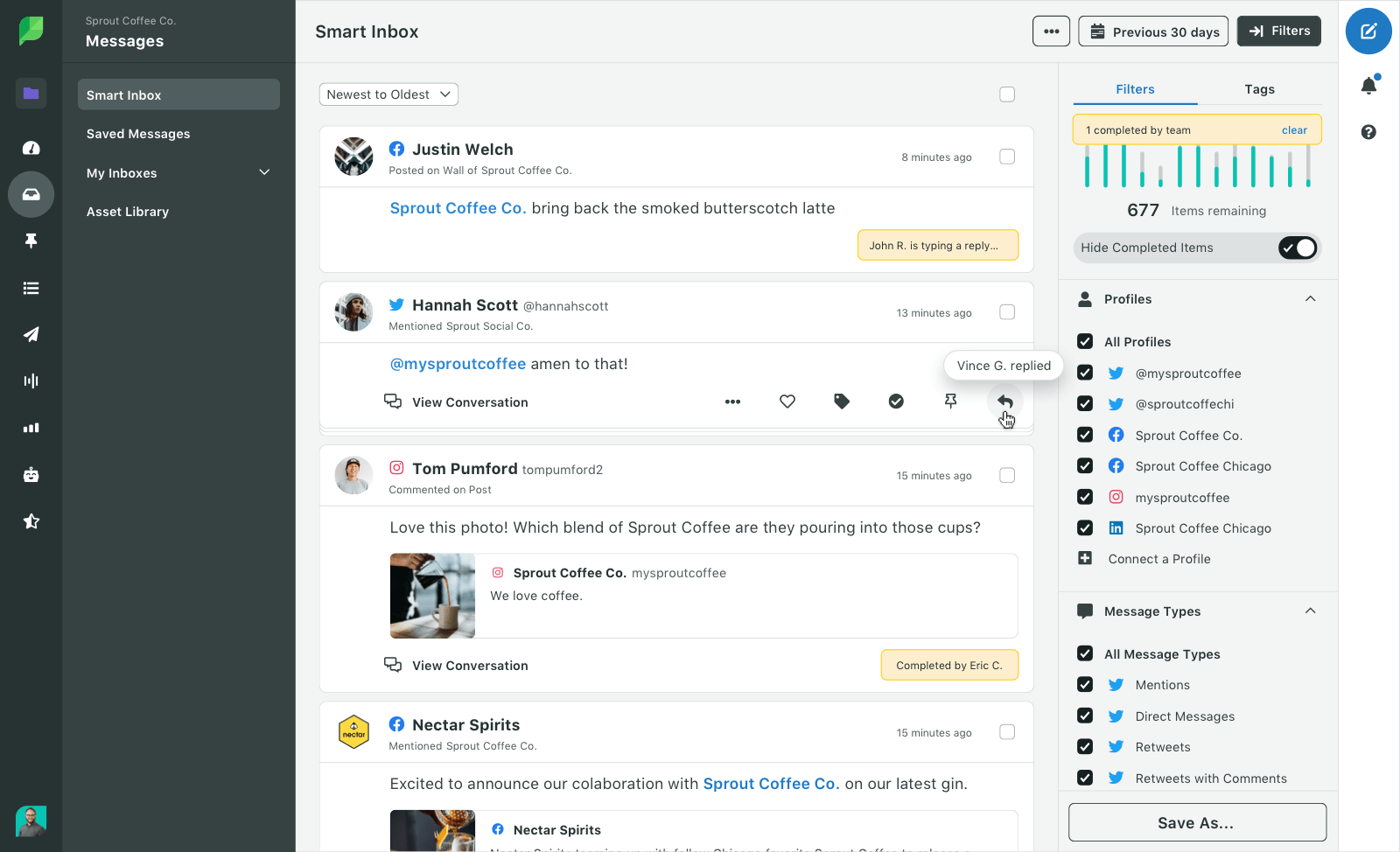
Another smart move is halting your automated posts during a crisis, at least temporarily.
For example, restaurants and venues in areas with shelter-in-place orders obviously shouldn’t be advertising sit-down meals and parties. Such posts feel out-of-place and insensitive during a crisis when people are focused on their well-being versus buying.
If you’re managing your social accounts in Sprout, hitting the proverbial pause button can be done in a single click. The ability to pull this sort of emergency lever is especially useful if you’re juggling multiple clients or accounts.

If you find yourself in social media crisis management mode, it’s only natural to want to get things “back to normal” as quickly as possible.
But if there’s one aspect of a crisis that you shouldn’t rush, it’s an apology.
In fact, a half-hearted apology can actually do more damage in a situation where your customers were truly hurt.
What makes a “good” public apology is up for debate, but the example below from Lady Gaga is generally considered to be a strong one. A long-form, heartfelt explanation to your followers is much more meaningful than the 140-character equivalent of “Sorry you were offended.”
I stand by anyone who has ever been the victim of sexual assault: pic.twitter.com/67sz4WpV3i
— Lady Gaga (@ladygaga) January 10, 2019
Here’s some good news: rarely is there a social media crisis that no brand can recover from.
Accidents and mistakes happen. They’re often beyond our control.
Look no further than marketers’ response to COVID-19 as a shining example. Both marketing teams and customers alike are taking to social media to share their experiences and come together during an uncertain time.

There’s perhaps no better place to provide public support and reassure your customers that you’re there for them.
Wow. Over 165 members of our customer community are joining our Zoom video call tomorrow to connect with each other and talk about how they are handling the current challenges both personally & professionally. If you are a customer & want to join, please DM us for the details.
— CrowdRiff (@CrowdRiff) March 24, 2020
To wrap things up, let’s discuss some pointers for avoiding another potential crisis in the future.
Below are some quick measures to keep from stepping into crisis territory.
Establishing a social media policy means having a set of checks and balances and place.
For example, who’s allowed to speak on behalf of your brand? Do you have your posts and comments go through approvals (think: client-side or a marketing team)?
By keeping your brand’s messaging limited to a select few, you’re less likely to post insensitive content. This creates a sense of accountability for your social marketing if something does go wrong.
Piggybacking on the tip above, your brand voice determines how you speak to customers.
For example, do you prefer to take a humorous tone? Formal? Snarky? There is no “right” answer here.
What matters is having a defined style guide so that your customer interactions are always “on-brand” and non-confrontational. This also makes it easier to help new hires understand how to talk to your customers via social.
Finally, you should always have a pulse on how people feel about your business.
Social listening can help you monitor conversations and the sentiment around your brand, whether it be positive or negative. This can help you spot the beginnings of a crisis and potential issues that your customers might have before they blow up.
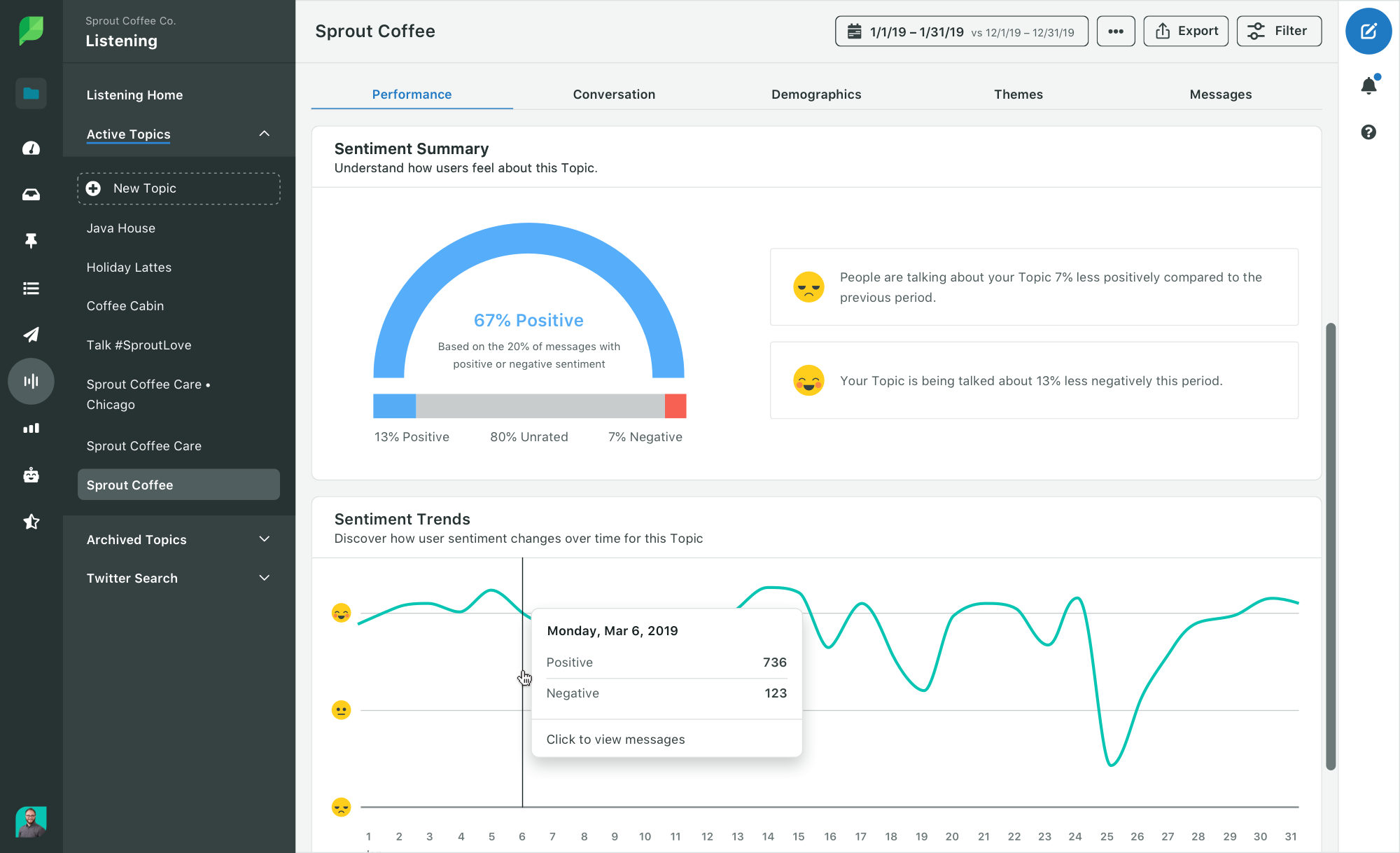
Managing a social media crisis doesn’t have to be a nightmare.
Are they stressful? Absolutely.
That said, crises come with the territory of having a social presence.
Whether it’s the unpredictable or something out of your hands, brands today need to be equipped to respond. With the right social media tools and a crisis action plan, you can carry yourself with peace of mind.
And if you haven’t already, make sure to check out our social media crisis management guide for more tips on being prepared!
This post Social media crisis plan: What to do when things go wrong originally appeared on Sprout Social.
In early March, we brought some of the UK’s leading ecommerce brands together to explore ways to leverage SEO to create business-wide impact. Matthew Morrissey, Senior Manager SEO Europe at Adidas, gave a talk on how to make an SEO team more cross-functional through search data. He discussed using seasonal search demand to help shape […]
The post Builtvisible Breakfast event – Ecommerce edition with Adidas appeared first on Builtvisible.
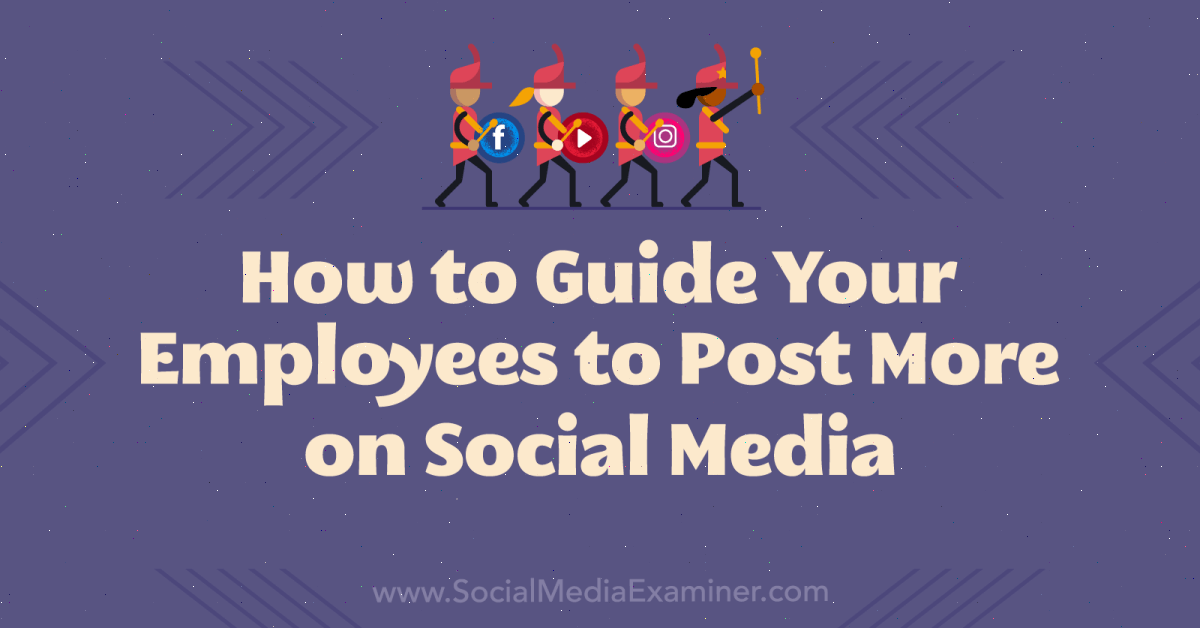
Want your employees to share more about your business on social media? Wondering how best to guide their social media posts? In this article, you’ll discover how to develop guidelines to help employees post more on social media and find examples of types of posts employees can model. #1: Create Clear Social Media Guidelines for […]
The post How to Guide Your Employees to Post More on Social Media appeared first on Social Media Marketing | Social Media Examiner.
Looking to master the art of headline writing?
Good!
Because conventional wisdom tells us what we already know: most people read and share posts based on titles alone.
Couple that with the fact that we live in an era of clickbait headlines where brands and blogs will say just about anything to score clicks.
Listen: from blog titles to social posts and beyond, knowing how to write a compelling headline is an invaluable skill.
And despite popular belief, doing so means more than just running your titles through a generator.
Don’t consider yourself much of a copywriter? Don’t sweat it! Our guide breaks down 10 actionable headline writing tips that’ll help you score those precious clicks and shares.
It’s no secret that readers today have small attention spans.
Think about it. As we’re scrolling through our Twitter or Facebook feeds, we’re passing by dozens of headlines in a matter of seconds.
That’s why it’s so important to answer the question of “Why bother?” or “So what?” with a compelling title that stops readers in their tracks.
Remember: your audience’s time is valuable. Your headlines should promise a payoff in exchange for their click or tap-through. Below are some awesome examples of benefit-driven headlines from Lauren Pope of G2.

At glance, your headline should highlight why someone should spend their valuable time reading. In short, what do readers get out of your post?
See how that works?
Among our headline writing tips, this is easily one of the most important.
Ask yourself: how can you frame your post’s title as benefiting the reader?
Saving time? Maybe money? Relieving some sort of pain point? Either way, strive to put that benefit front-and-center in your headline.
Question-based headlines are time-tested and remain the go-to for writers for a few reasons.
We’re curious creatures, after all. When we take to Google or social media, we already have questions in our head (think “How do I do _____?” or “Why is _____ so important?”) and such headlines feed into our curiosity. Questions aren’t just prime for blog post headlines but also social captions as well.
What’s the goal of content marketing, anyway?
Here, almost 200 marketers agree on the 15 content marketing goals every program should set and achieve: https://t.co/gh0A3IknGY
— Databox (@databoxHQ) March 6, 2020
Question-based headlines also serve as a natural call-and-response. When we see a question presented to us, our brains want to be satisfied with an answer by default. Here’s a great question headline from MailChimp:

The beauty of question-based titles is that they can be formatted for just about any type of content or industry. For example, here are some sample formats for question-based headlines to get you brainstorming:
If you are looking for meaningful, real-world questions to drive your titles, look no further than your audience.
As noted in our guide to online social listening, platforms such as Quora and Reddit can be goldmines for topics and ideas based on questions that your audience is already asking. This applies to headlines and social captions as well.

Perhaps one of the easiest ways to connect with readers is by addressing them (and yourself) directly.
This means referring to yourself or your company in the first-person (“I” or “We”) and your reader in the second-person (“You”).
This is a subtle yet significant way to make your posts seem more personable and likewise grab your readers’ attention. Let’s look at some examples.
This title from Salon is a shining example of a strong editorial headline using “I.”

Is it optimized for keywords or SEO? Nope. However, it definitely makes us want to read through and dig into the author’s story.
Now, let’s talk “we.” Using “we” instead of your company or brand name is a smart move to make your posts feel like they’re coming from an actual person versus a faceless business. Here’s an example from the Moz blog:

Additionally, referring to your readers in the second-person can help your titles feel a bit less sales-y or market-y. You can’t refer to your readers by name, but “you” is a close second.

It’s easy to get lost in the weeds of “optimization” but at the end of the day, headline writing is about making a connection with your reader. More personal headlines can make it happen.
Stealing from pop psychology, numbers are easy for our brains to process at a glance.
Additionally, they’re another prime way to get readers to stop and look.
Shocking statistics. Big figures (think 1000% or $42,049,200). You get the picture.
You don’t have to go crazy with numbers to incorporate them into your headlines, though. For example, listicles and list-style headlines are so popular because they naturally reel in readers.
Why? Well, lists are straightforward and scan-worthy. As a result, list-centric titles signal posts that are simple to digest and scroll through in no time. That’s why listicles and number-based headlines are the cornerstones of so many blogs today (including SnackNation’s blog).

Numbers can also be used to give your headlines a sense of immediacy and credibility.
Many click-worthy headlines make time-sensitive promises (“…in Just 10 Days”). Notice that many case studies likewise use specific figures (“How We Increased Our Social Shares by 112%”) to signal that a study was actually conducted and the numbers aren’t just fluff. Here’s an example from SingleGrain:

Simply put, number-based and list-style headlines are safe bets and should definitely be part of your content strategy.
If you dig around for statistics and studies regarding “optimal” headline lengths in terms of words and characters, you’ll get a mixed bag of results.
How long your titles should be is situational.
For example, your title might get cut off in Google search results if it exceeds more than ~60 characters. Does that mean you should exclusively write bite-sized headlines? No, and notice that almost no brand or publication does so.
Below’s a quick breakdown of when shorter headlines make sense versus when longer ones do.
Although shorter headlines don’t give you as many opportunities to use keywords or leverage your brand voice, they’re easy to understand at a glance. They’re bold. And yes, they probably won’t get cut off by Google or social previews on Facebook and Twitter.

On the flip side, longer headlines allow some breathing room to let your tone of voice shine through and make your titles seem a bit less stuffy.

If you’re targeting a long-tail keyword, you may have no choice but to rely on a longer title for a particular post. An added bonus of longer titles is that they feel less generic by default: the more words in a headline, the more opportunities to put your unique spin or creative trademark on a post.
We recommend experimenting with both types of headlines for the sake of variety and likewise understanding if one type actually does outperform the other for your brand.
Many headline writing tips center around the concept of “power words.”
That is, terms and phrases that stand out to readers and reinforce that your post matters.
Making power words work doesn’t mean forcing them into your headlines, but rather adopting angles where you can weave them in naturally. Below are 10 power words and phrases that work for just about any industry:
Although you shouldn’t exclusively rely on negative language, terms like “don’t” and “can’t” let off an alarm in your readers’ heads.
Ex: “5 SEO Mistakes Your Site Can’t Afford to Make”
This presents your post as being “must-see” and therefore not something your readers can afford to simply scroll past.

Remember what we said about benefit-driven headlines? Whether it’s time, money or energy, saving your reader something presents your post as a problem-solver.
Ex: “How to Save 10 Hours in Your Workweek Without Breaking a Sweat”
These terms again highlight your post as something to help your readers, all the while helping them avoid potential headaches in the process.
Ex: “10 Ways to Prepare for the ‘Slow Season’ and Keep Your Business Afloat”
Terms like “actually” make your posts seem more actionable and can likewise be used to flip conventional wisdom on any given topic.

Easily one of the most popular types of posts, people are looking to the web to learn how to do just about anything. Feed into to natural sense of curiosity
Ex: “How to Score More Customers Through Social Media”
“Without” presents your post as an easy fix or solution that requires your reader to do less rather than more.

These types of headlines signal that your reader needs to be taking action on a topic ASAP, all the while referring to them directly.
Ex: “Why You Should Have Started Using TikTok, Like, Yesterday”
People don’t want to be bothered with information or news that’s not breaking or pressing. By saying your post is “important,” you’re letting readers know that what you’re saying matters.
Ex: “The Most Important Question Your Company Isn’t Asking”
Declaring something to be the “best” or “worst” might seem like hyperbole, but it’s a proven way to encourage clicks and again highlight that you’re presenting important (see above) information.
Ex: “10 of the Best Email Tips That Nobody Is Talking About”
Do you need to sprinkle at least one of these power words in each of your headlines? Not necessary. That said, consider how you can potentially build headlines around these phrases if you’re stuck or are looking for a fresh angle.
A simple headline writing tip, but definitely one worth noting!
We’re not saying you should exclusively use jargon in your headlines. Instead, consider how you can craft titles that speak to specific sects of your audience.
For example, phrases like “churn” or “vendor” are going to speak to folks in SaaS marketing while “aesthetic” and “xerosis” are relevant to a beauty brands’ audience.

Using industry-specific terms isn’t just a way to let your audience know that you’re writing for them, but also potentially target keywords in both social search and Google.
If you’re not happy with your current headline or don’t know where to find inspiration for your next one, relax.
Again, note that there are no “concrete” headline writing rules that you’re forced to follow. Looking at the Google search results for “skincare tips,” we can see a variety of headlines from listicles and how-tos to a “best tips” guide.

We recommend writing at least five headlines to help you hash out your ideas and get the creative juices flowing. Here are some sample headline exercises to help you put together a title for your next post:
Creativity counts when it comes to headlines.
In other words, you shouldn’t simply rely on listicles or how-to headlines exclusively. Doing so makes your blog boring and doesn’t do much to excite your readers.
On the flip side, having a diverse content calendar with a variety of headlines can help keep your readers on their toes and gives them something fresh to look forward to.
For example, we try to mix it up with a variety of deep-dive guides, how-tos, lists and case studies here at Sprout.

The takeaway? Mix it up!
If you want a definitive answer regarding which types of headlines resonate most with your readers, look no further than your analytics.
Doing so can help point you to which types of headlines you should prioritize and likewise which ones you might want to avoid. Although there are definitely variables involved with traffic and shares (think: timing, the timeliness of a topic, SEO and keywords), realizing that your “how-to” posts or listicles get double the engagement is definitely telling.
For starters, keep a close eye on your traffic numbers via Google Analytics to assess which headlines score the most traffic.

Meanwhile, analyzing your most-shared and popular social posts is a smart move. Make a point to dig into your best captions as well (think: your social captions effectively introduce your headlines). To figure out what’s working and what’s not, tools like our social media analytics can clue you in.
And with that, we wrap up our guide!
Hopefully, our guide to headline writing served as some much-needed motivation and inspiration for coming up with more compelling titles.
No matter what type of brand or blog you’re promoting, these ten tips are totally fair game.
But remember: headline writing is only the tip of the iceberg when it comes to getting more eyes on your content.
For example, what happens once they actually get on the page?
If you’re eager for more engagement on your posts themselves, make sure to check out our guide on how to write a blog post that people will actually read. And with that said, happy writing!
This post Headline writing: 10 ways to get more eyes on your content originally appeared on Sprout Social.
The turbulence of the last few weeks has clouded our view of the future to levels not seen since the 2008 financial crisis. With uncertainty comes fear, and fear can drive knee-jerk reactions that might not be in the long-term interests of your business. Builtvisible hasn’t been immune from this. We have had to review […]
The post SEO – What we need to do now appeared first on Builtvisible.
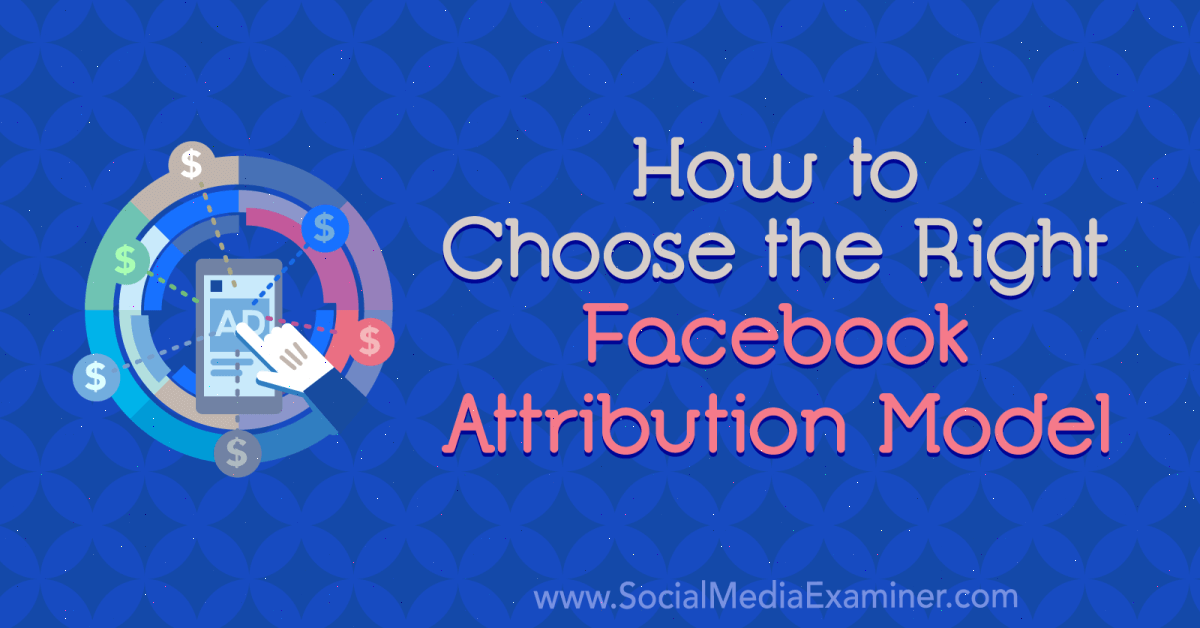
Are you struggling to track the impact of your Facebook ads? Wondering which Facebook attribution model to use? In this article, you’ll discover seven different Facebook ad attribution models to assess your campaigns’ performance. About Facebook Attribution Models The Facebook attribution tool gives you insights into your customers’ purchasing journey and the roles of different […]
The post How to Choose the Right Facebook Attribution Model appeared first on Social Media Marketing | Social Media Examiner.
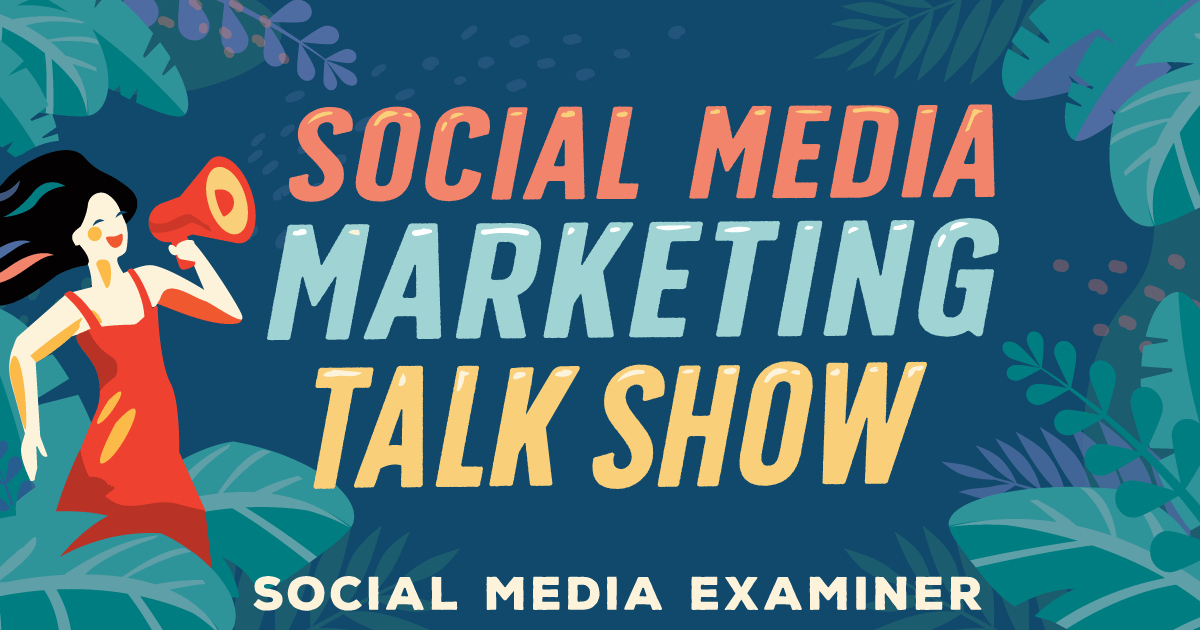
Welcome to this week’s edition of the Social Media Marketing Talk Show, a news show for marketers who want to stay on the leading edge of social media. On this week’s Social Media Marketing Talk Show, we explore what global spikes in social media usage mean for marketing strategies and LinkedIn’s new conversation ads format […]
The post Social Media Use Surges: How Marketers Should Respond appeared first on Social Media Marketing | Social Media Examiner.